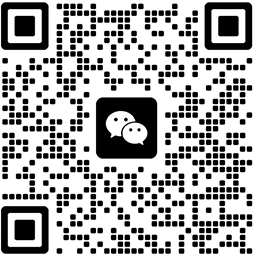本文《如何从空的 interface{} 类型访问 JSON 数据中的字段?》的内容中将会涉及到等等。如果你正在学习golang相关知识,欢迎关注我,以后会给大家带来更多Golang相关文章,希望我们能一起进步!下面就开始本文的正式内容~
问题内容
我是 Go 新手,我知道这可能是一个简单的答案,但我在空接口中访问 jsON 值时遇到了困难。数据来自 Twilio Go Helper 库 (https://pkg.go.dev/GitHub.com/twilio/[电子邮件受保护] /rest/lookups/v2#LookupsV2PhoneNumber.LineTypeIntelligence) 并且我正在尝试访问对象中的值
LineTypeIntelligence *接口{} `json:"line_type_intelligence,omitempty"`
如果我打印对象,它会显示为地图
fmt.Println(*resp.LineTypeIntelligence)
哪个 输出
map[运营商名称:Verizon Wireless error_code:<nil> mobile_country_code:311 mobile_network_code:489 类型:mobile]
我尝试使用直接访问地图中的值
Carrier_name := resp.LineTypeIntelligence["Carrier_name"].(string)
不幸的是,这会产生编译器错误:
in无效操作:无法索引 resp.LineTypeIntelligence(*interface{} 类型的变量)
正确答案
就目前而言:
carrier_name := resp.linetypeintelligence["carrier_name"].(string)
这是行不通的,因为 resp.linetypeintelligence 的类型为 *interface{} (或简称 *any)。您无法像访问地图一样访问它。 interface{} 类型简单地表示无论为该字段分配什么值,它都会实现一个空接口(也就是说:所有东西都实现一个包含 0 个方法的接口,因此该值可以是任何值)。
要访问数据本身,您需要一些类型断言/转换,并将值复制到更易于使用的映射中:
ltimap, ok := *resp.linetypeintelligence.(map[string]any)
if !ok {
// return errors.errorf("expected linetypeintelligence to be a map, instead saw %t (%#v)", *resp.linetypeintelligence, *resp.linetypeintelligence)
panic("handle error because we expected the value to be a map, but it's something else")
}
// now ltimap is map[string]any
carriername, ok := ltimap["carrier_name"].(string)
if !ok {
return errors.ner("carrier name not a string")
}
// and so on
这当然相当乏味。考虑到您已经知道地图将包含 carrier_name 键,为什么不将数据解组为不同的类型?
查看数据,这应该有效:
type lti struct {
carriername string `json:"carrier_name"`
errcode *int `json:"error_code,omitempty"` // or string, or whatever
mobcc int `json:"mobile_country_code"` // twilio might use string for these
mobnc int `json:"mobile_network_code"`
type string `json:"type"`
}
这不是最有效的处理方法,但将此数据放入您自己的对象的最快方法是再次封送它,并以您自己的类型解封它:
b, _ := json.marshal(resp.linetypeintelligence)
lti := lti{}
if err := json.unmarshal(b, <i); err != nil {
// handle error
}
fmt.printf("carrier name: %s\n", lti.carriername)
也许是迂腐的,但 golang 经常被批评为“过于固执己见” wrt 你应该如何格式化/编写代码。这种批评已经平息下来,因为严格的格式已被证明是一件好事。由于代码的格式相同,因此人们可以查看任何人编写的代码,并关注它做了什么,而不是它是如何编写的。
由于跨项目/代码库一致性的好处,除了 gofmt 之外,golang 存储库还有一个涵盖大量其他约定的 wiki 条目:Code Review Comments
您的问题包含 carrier_name 等变量。在golang中,推荐使用snakecase变量名。
您还可以执行类似 resp.linetypeintelligence["rier_name"].(string) 的操作。但是,从地图中获取值不应与强制转换结合使用。安全地图访问如下所示:
v, ok := m["carrier_name"]
if !ok {
// v will be the nil value of the value type of your map
// ie map[string]int => v == 0
// map[string]string => v == ""
// map[string]*int => v == nil
// you can initialise v to a safe value if needed, or return an error
}
// ok was true, the map does indeed contain a value for the key "carrier_name"
name, ok := v.(string)
if !ok {
// though the map contained the required key, it turned out not to be a string...
}
// type assertion was successful: map contained the key, and the value was indeed a string
今天关于《如何从空的 interface{} 类型访问 JSON 数据中的字段?》的内容就介绍到这里了,是不是学起来一目了然!


